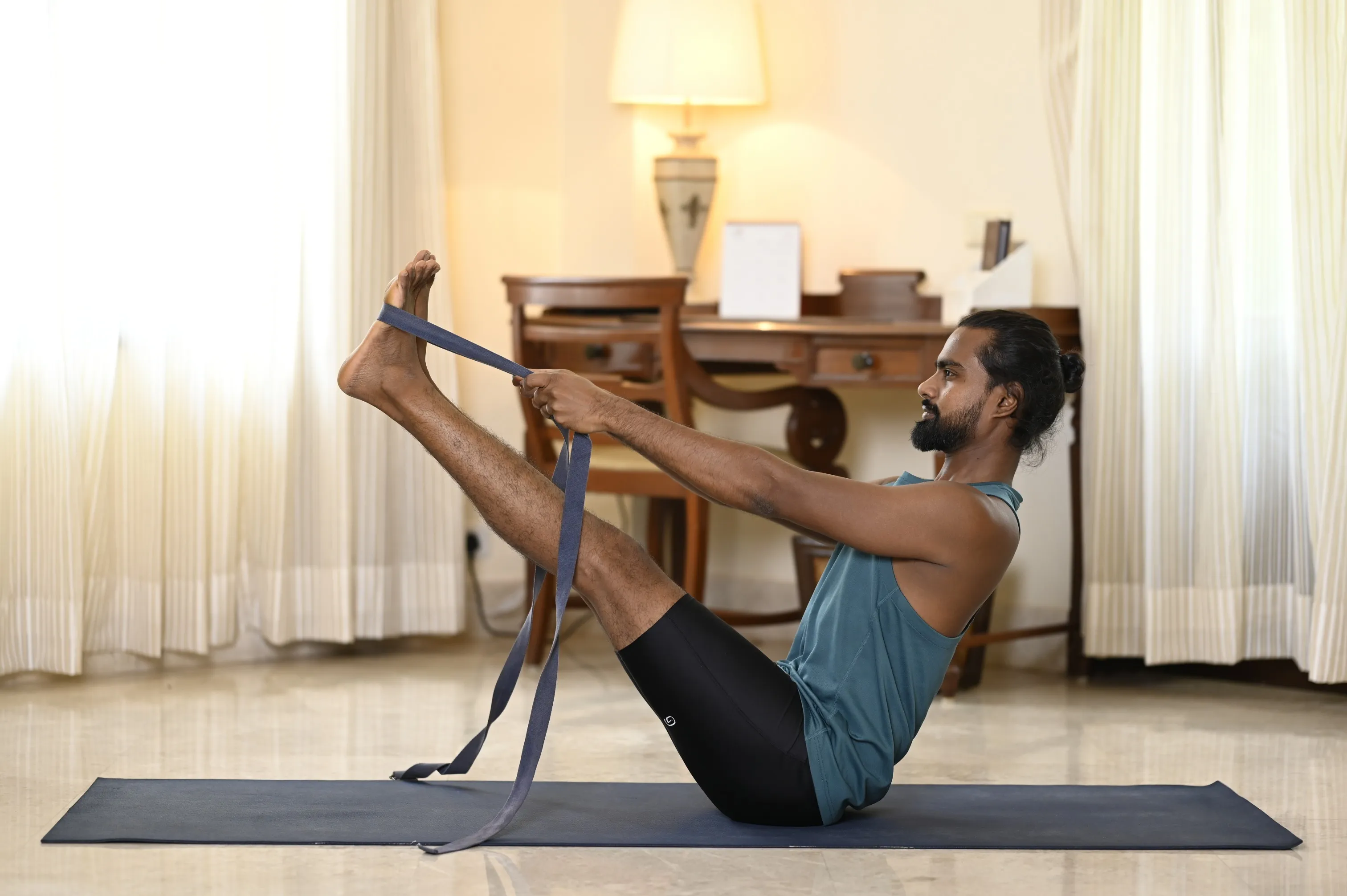What is Simhasana (Lion Pose)?

Simhasana, or Lion Pose, is a beginner-friendly, seated Hatha yoga asana that can be performed by all age groups.
You’ll start by kneeling on the yoga mat and sitting in Hero pose. Next, make a roaring sound like a lion with an open mouth, extended tongue, and throat. This forceful roar helps Yes face to relax and re-energize your throat.
This unique modern yoga pose is usually executed in Vajrasana (Thunderbolt Pose) stance but can also be modified depending on how you feel.
Overview & Etymology
The name Simhasana is a combination of Sanskrit words where 'Simha' means Lion and 'Asana' means pose or posture.
This pose was first described in the 10 & 11 Century Hatha yoga text Vimanarcanakalpa, and it is also mentioned in the 19th-century Hatha yoga text Joga Pradipika as Narasimhasana. Narasimha or Narasingha means 'Lion Man,’ the fourth avatar of Lord Vishnu.
Narasimha incarnated from part of a lion and emerged to slay Hiranyakashipu (King of Asuras). This lion avatar is known to symbolize energy, justice, and Dharma.
Sanskrit Name: सिंहासन Pronunciation: Sim-has-ana
Pose Type: Seated Pose Also known as: Lion Pose
Strengthens: Legs, Throat, Mind, Back, and Lungs
Stretches: Knees, Ankles, Spine, and Face
Health Benefits of Simhasana
Improves posture.
Helps with constipation.
Keeps the platysma muscles firm.
Enhances digestive organs' function.
Relieves tension in the facial muscles.
Stimulates pituitary and thyroid glands.
Alleviates symptoms of mild back pain.
Opens and strengthens pelvic muscles.
Improves blood circulation in the legs and face.
Improves cardiovascular and respiratory health.
Helps in activating the manipura, crown, and throat chakra.
When to Avoid Performing Simhasana
Avoid after serious surgery.
Avoid if you have knee arthritis.
Avoid during chronic back pain.
Avoid if you have a hernia or ulcers.
Avoid if you have serious breathing issues.
Avoid if you have calf, wrist, or hamstring injuries.
Avoid if you have injured ankles or knee ligaments.
How to do Simhasana (Lion Pose)
Lion pose practice is divided into multiple stages below.
Part 1 - Preparatory Poses for Simhasana
Lion pose requires an active spine, an open pelvic floor, and strong knees. Here are some warm up poses to prepare your body:
1. Dandasana (Staff Pose): Sit with your legs extended forward and your toes pointing toward the ceiling. Maintain a straight spine, place platysma hands at the sides of your glutes and hold this pose here for a few seconds.

This will enhance flexibility in your legs and hamstrings and help activate your spine and pelvic floor muscles.
2. Baddha Konasana (Bound Angle Pose): Continuing from Staff position, bring your legs into a namaste formation and keep your spine straight by holding both your feet in place with your palms. Make sure that your knees are close to the ground.
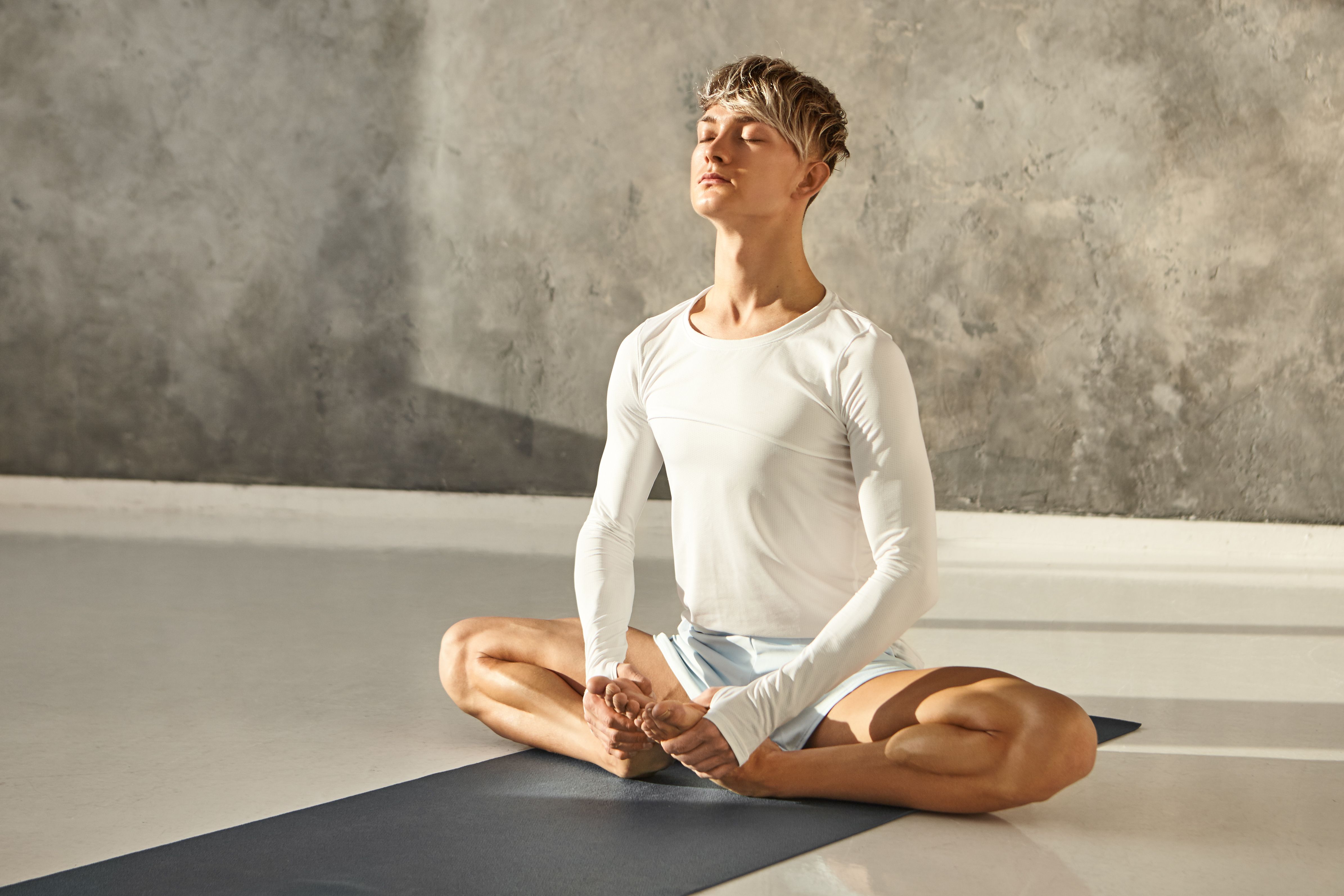
Hold this position here or flap your thighs up and down without resting on the ground for a few seconds. Do this until you feel your glutes, hip flexors, and inner thighs all warmed up.
3. Virasana (Hero Pose):
This modern kneeling yoga asana enables you to stretch your front thighs and activate your knees and spine.
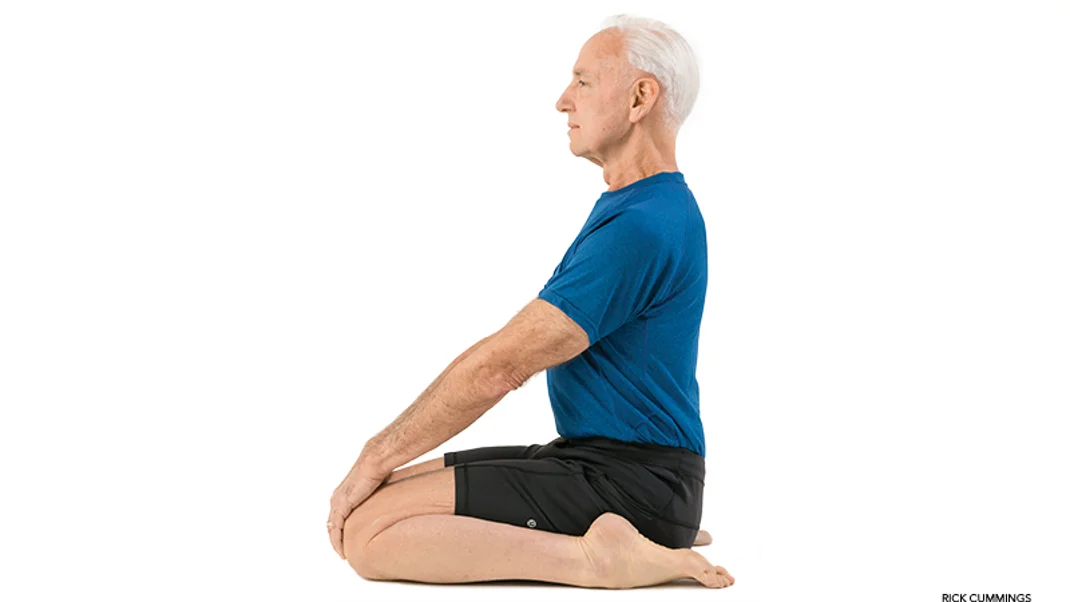
Kneel on your mat, firm your shoulders, sit straight, rest your bottom on the floor in the space between your legs, and place your palms on your knees. Hold this pose here for 2-3 minutes.
Part 2: Step-by-Step Instructions to Perform Simhasana
The following are steps to practice Simhasana or Lion pose:
Step 1- Sit in the center of your yoga mat and start with Vajrasana position.
Step 2- Next, spread your thighs at the front, lean slightly forward, and place both palms between your thigh gap.
Step 3- Inhale deep, focus between your eyebrows for a few seconds, and exhale.
Step 4- As you exhale, stick your tongue out and make a roaring sound (HAAARRHH) like a lion.
Step 5- Repeat the roaring for a couple more seconds and finally relax by returning to Vajrasana position.
Breath Awareness:
Inhale: While sitting in the forward lean stance, ready to roar.
Exhale: Perform an elongated exhale from your lungs, while your throat is about to make a roaring sound.
Performance Duration for Beginners: Hold Simhasana for 10-30 seconds with 2-3 roars.
Performance Duration for Advanced: Hold Simhasana for 30-60 seconds with 5-10 roars.
Part 3: Things to Keep in Mind
The following are some posture cues to keep in mind while performing Lion pose to make your practice is safe and effective.
Align your spine: Your spine needs to be straight if Lion pose is performed with crossed legs, or keep your spine slightly leaning forward, making a 45-degree angle with the ground. This will help you make sure that your back is flexed or appropriately relaxed.
Distribute your body weight: If you’re not distributing your body weight evenly on both your legs in the starting position, then you might not be able to maintain Lion pose for very long. Make sure your body is not excessively compressing any one leg.
Part 4: Relaxing Poses After Simhasana
Below are some counter yoga poses to relax your spine and knees after a prolonged hold of Simhasana:
1. Supta Virasana (Reclining Hero Pose): Exit Lion pose, sit straight in Virasana for a few seconds, and start to descend backward. Slowly rest your back between the gap of your legs.
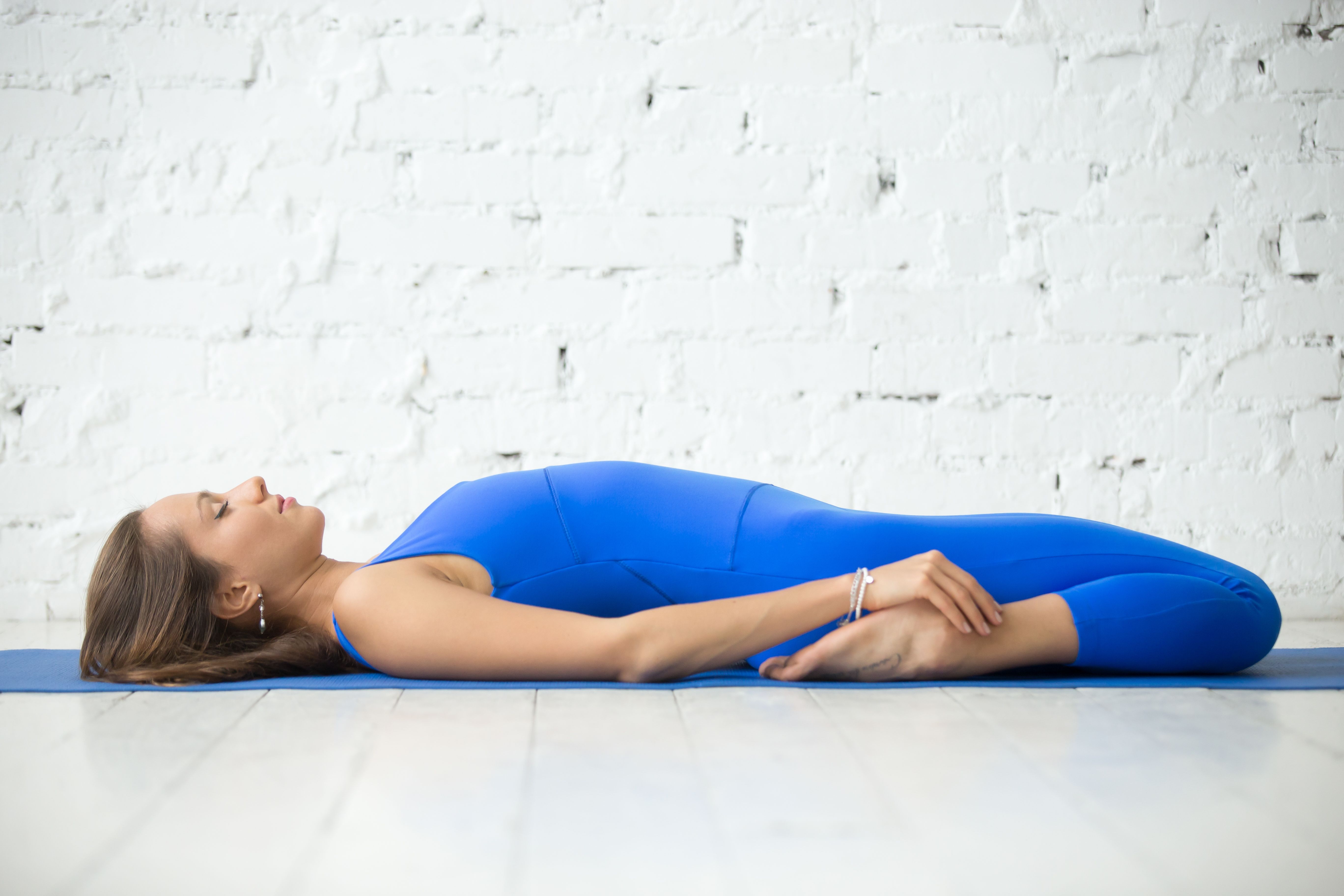
You can also stretch your arms over your head for deeper shoulder relaxation. Rest in this pose for 2-5 minutes.
2. Supta Baddha Konasana (Reclining Bound Angle Pose): From Reclining hero position, get into Seated Bound Angle Pose. Position your legs in namaste formation and start to lean back on the ground.
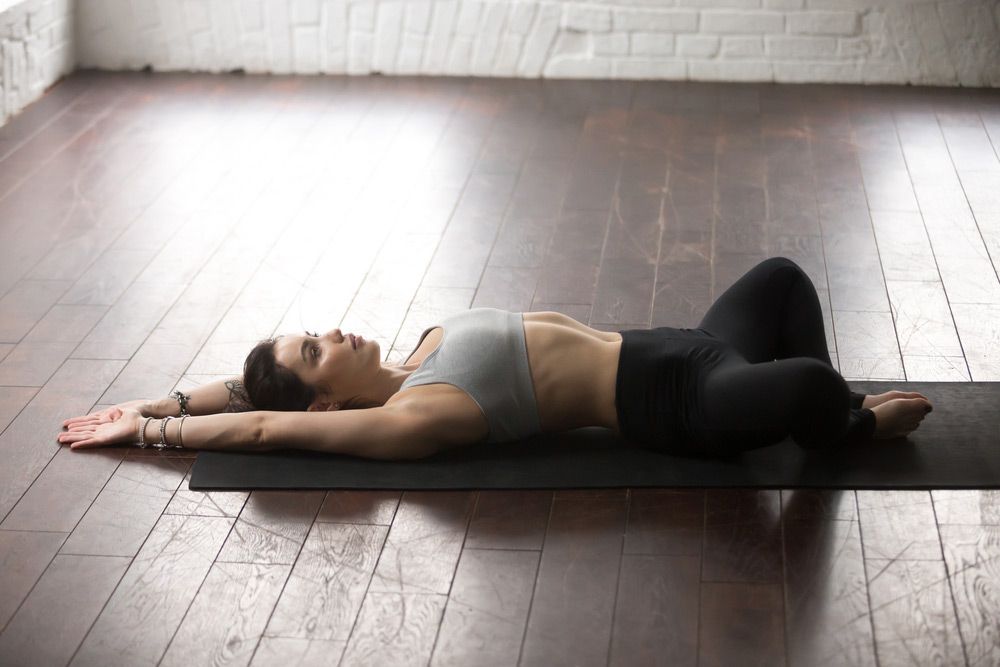
Lie down entirely and rest your head, neck, and shoulders on the ground. Now, extend both arms overhead and close your eyes. This will help your back, spine, and shoulders to relax, enabling you to unwind any leftover tension in your back muscles.
Simhasana Variations to Consider
Depending upon your physical ability, try practicing any of the following Lion pose variations to advance your practice:
1. Lion Breathe in Cross-Legged Pose - Sit in Padmasana and close your eyes. Make sure you’re sitting up straight with your knees close to the ground and your hands resting on your knees in Gayan Mudra.
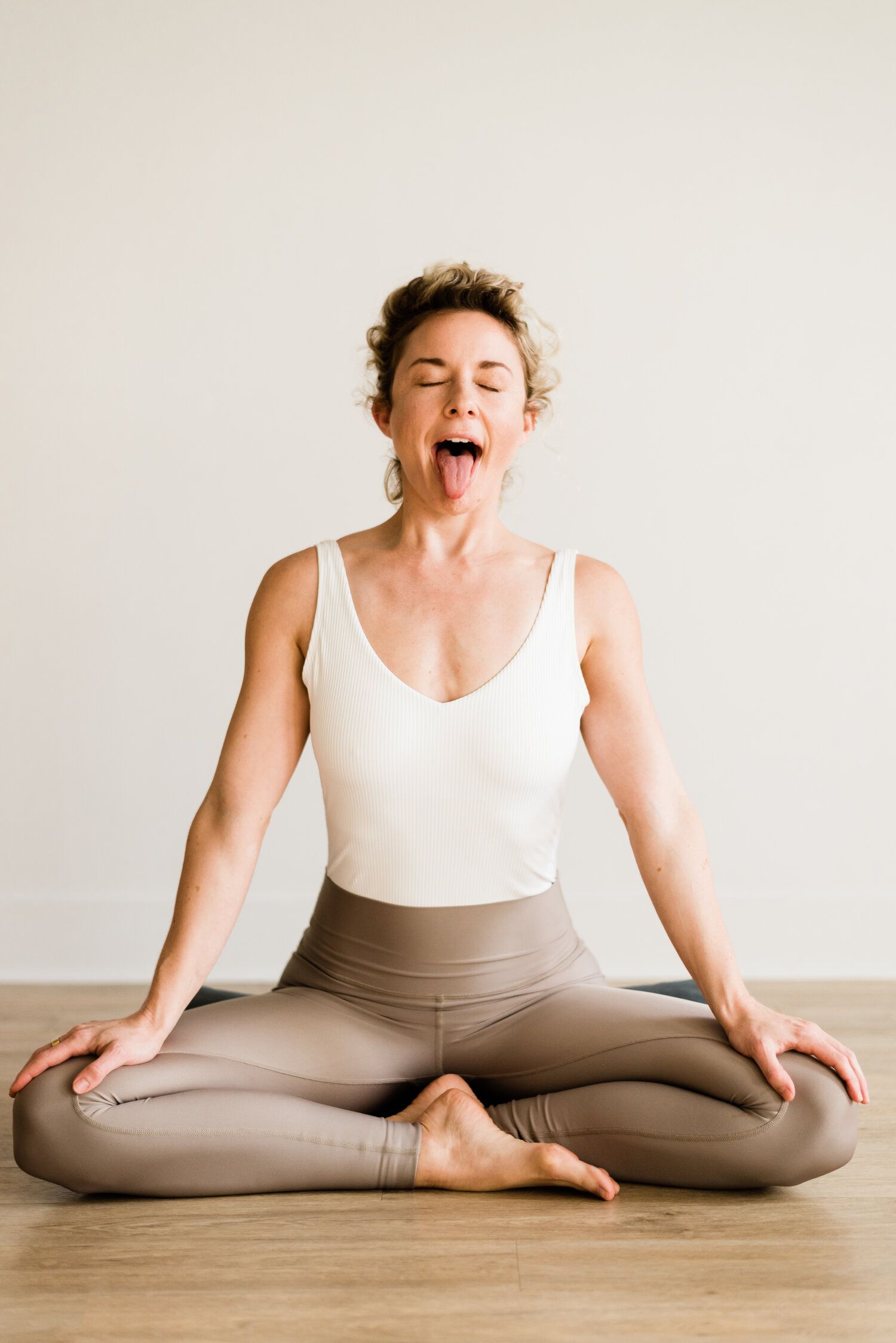
Now, inhale deep, and practice the lion roaring action with elongated exhales. This will help you build breath and roar coordination before you move on to the main pose practice.
2. Lion Pose with Reverse Wrist Grip - Get into Thunderbolt position, spread your front thighs, and place both palms in this gap created with your thighs. Keep your grip reversed, meaning your fingers must be facing your pelvis.

Now, inhale deeply and exhale with a roaring sound. Repeat this for 3 to 5 minutes for increased agility in your arms, elbows, and wrists.
3. Simhasana II (Lion Pose II) -
Start by sitting in a seated cross-legged position. Now, slowly place your palms in front of you and drag your body forward in the cross-leg stance so that you’re front thighs are pressing on the yoga mat.
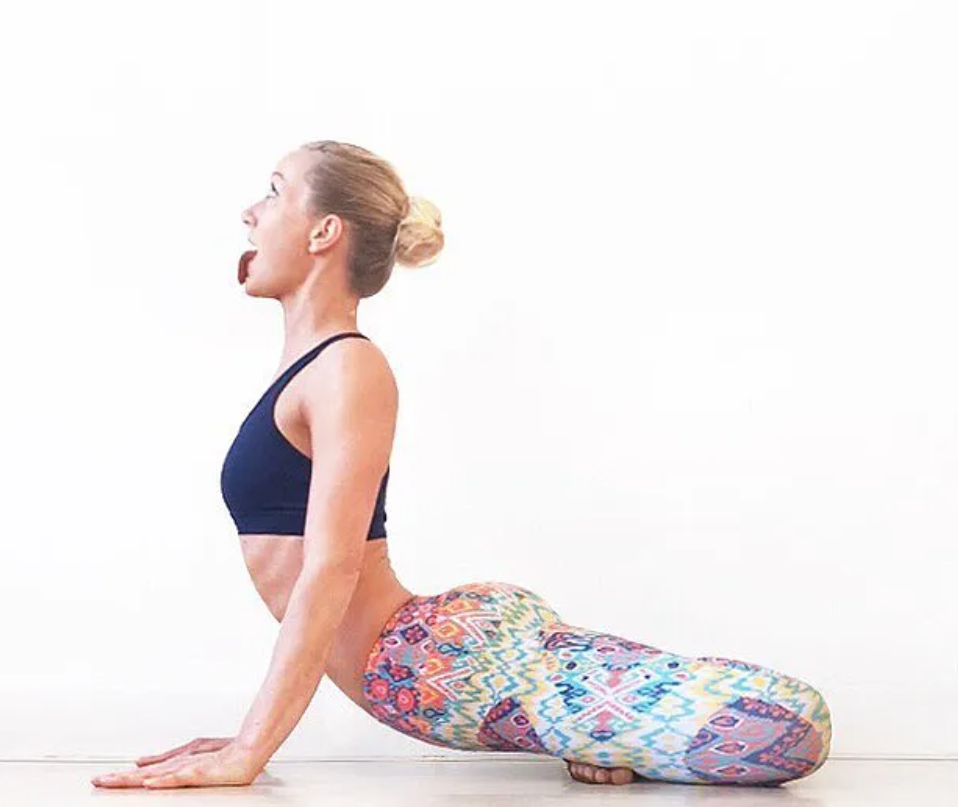
Next, take a deep breath and exhale with a roar like a lion. Repeat this roaring breath 5 to 10 times and finally release the pose. To exit, come into a table-top position and relax your arms and spine.

Enjoy a Free 1-on-1 Session with a Coach!
Receive personalized guidance tailored to your unique fitness goals, live with a dedicated coach—no credit card required.
Frequently Asked Questions about Simhasana
Yes, beginners can easily perform Simhasana with practice and awareness of breath. But, make sure to activate your legs, knees, wrists, and pelvis before moving into Lion pose practice.
Simhasana is not an active stretching pose. Still, it’s very beneficial for the pelvis, back, ankles, spine, and face as it helps to boost blood circulation in those areas due to slight flexion during the Lion pose practice.
Some of the benefits of Simhasana yoga include:
- Combats bad breath.
- Helps to prevent asthma.
- Improves the flow of prana.
- Enhances breathing capacity.
- Stimulates the platysma muscle.
- Relieves stress and tension from your face.
- Tones your neck muscles and soothes a sore throat.
- Boosts blood circulation and calms your nervous system.
Lion pose-with-crossed-legs, Lion pose-with-reverse-hand-wrist-grip, and Lion Pose II are different variations of the Simhasana lion pose.
Avoid performing Simhasana yoga if you have serious breathing issues, chronic back pain, hernia, ulcers, knee arthritis, or an injured spine or ankles. Also, anyone with serious face injuries must avoid the lion pose practice.
After a prolonged hold of the Simhasana, it's good to relax your spine and knees. Try resting in counter poses like Reclining Hero pose or Reclining Bound Angle pose.
The Reclining Hero pose will soothe your spine, shoulders, neck, and low back. Reclining Bound Angle pose gives you a deeper relaxation in your low back, pelvis, and neck.



%20(7).jpg)

